12 Bones of the Lower Limb
Bones of the Lower Limb
For reference, the figure below shows how all the bones of the lower limb fit together.
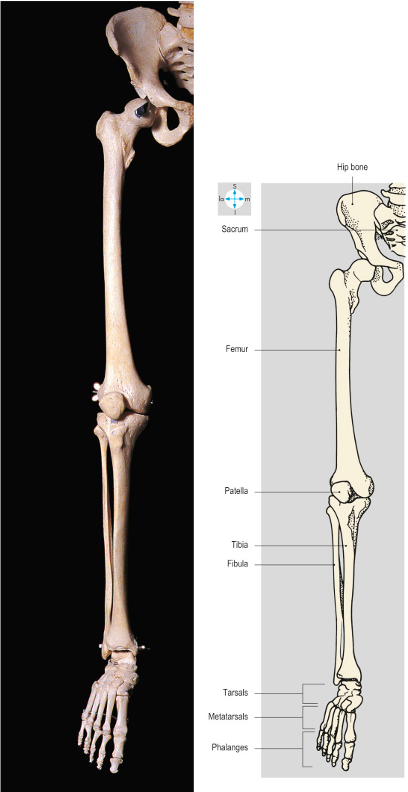
Just as the arm is attached to the trunk via the shoulder girdle, the leg is attached to the trunk via the pelvic girdle. There are three bones that make up the pelvis: two hip bones anteriorly, and the sacrum posteriorly.
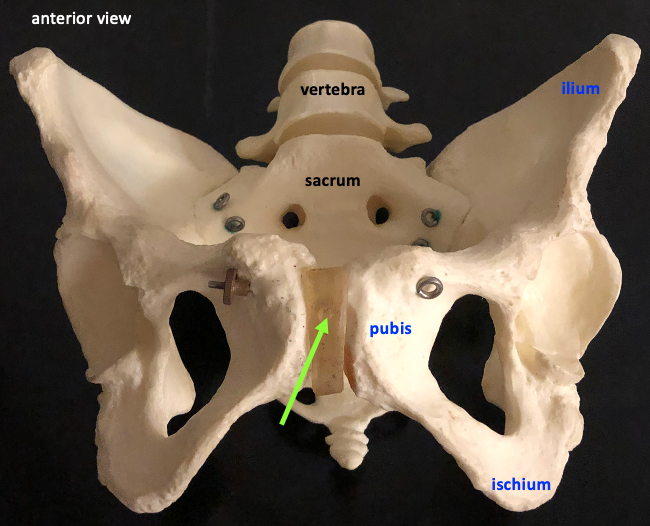
The hip bone (or os coxae–a term I don’t expect you to learn for this class) is actually the fusion of three bones: the ilium, the ischium, and the pubis. The anterior joint between the two pelvic bones consists of a fibrocartilage pad and is called the pubic symphysis. This joint is only slightly mobile.
The figure below shows two views of the hip bone, and illustrates where the ilium, ischium, and pubis come together. The three bones fuse in the acetabulum, the hip socket where the femur articulates with the pelvis. On the inferior surface of the ischium is the ischial tuberosity, a rough area that is the origin (proximal attachment point) for the hamstring muscles (biceps femoris, semimembranosus, and semitendinosus).
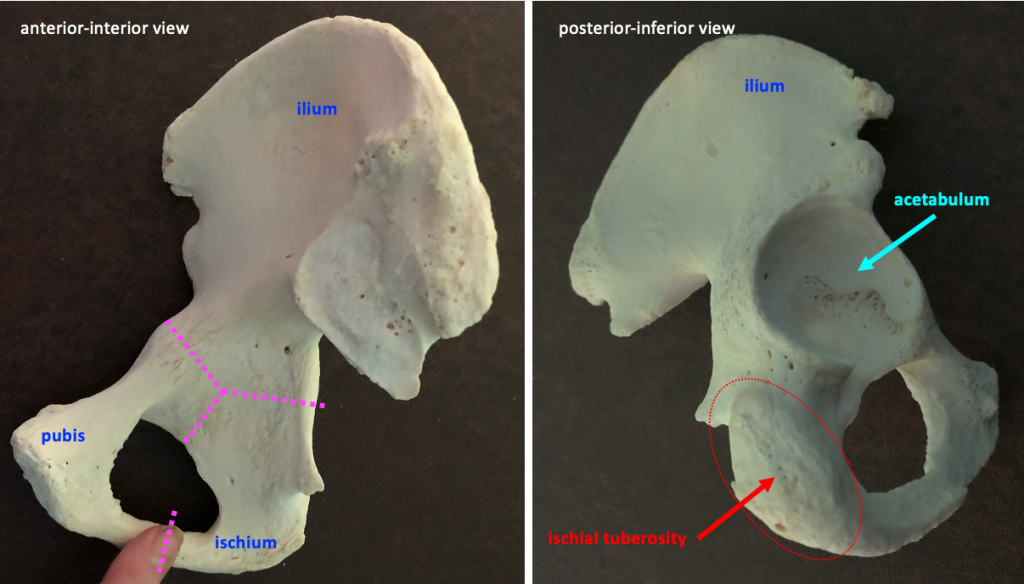
The figure below shows an anterolateral view of the hip bone with the acetabulum at center.
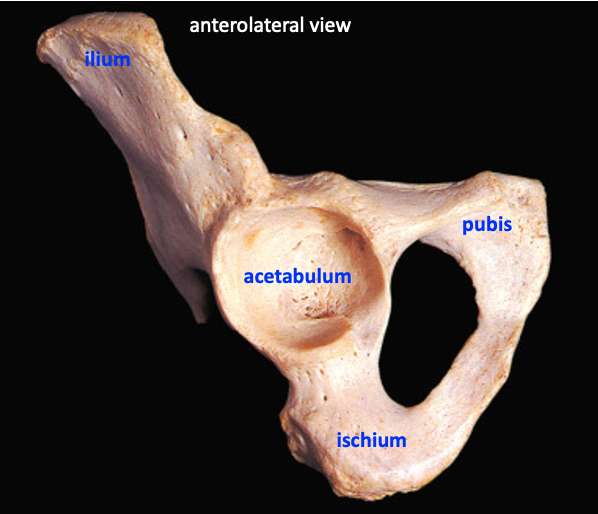
The next figure illustrates how the head of the femur articulates at the acetabulum to form the hip joint.
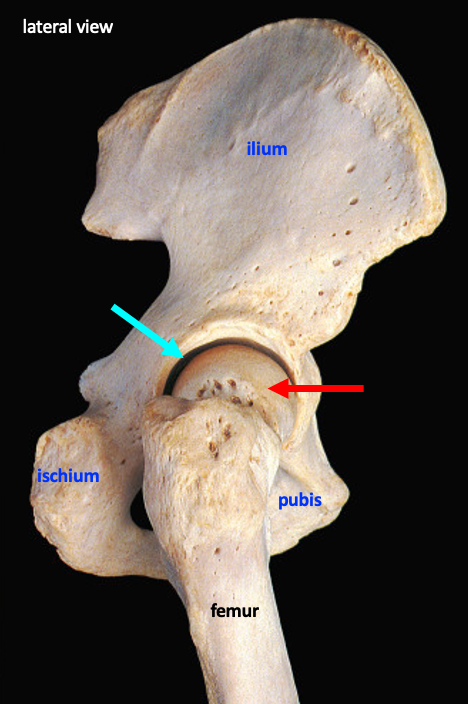
The femur is the thigh bone. On its proximal end it has a round head that attaches to the rest of the bone by a skinnier neck. The head articulates with the pelvis in the hip joint (see above).
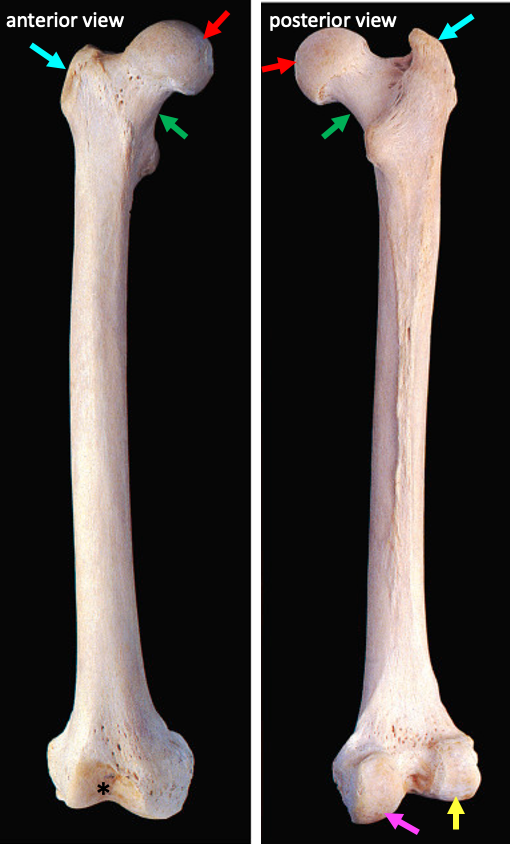
On the lateral side of the proximal femur is a large prominence called the greater trochanter. The greater trochanter is an attachment site for muscles that move and stabilize the hip.
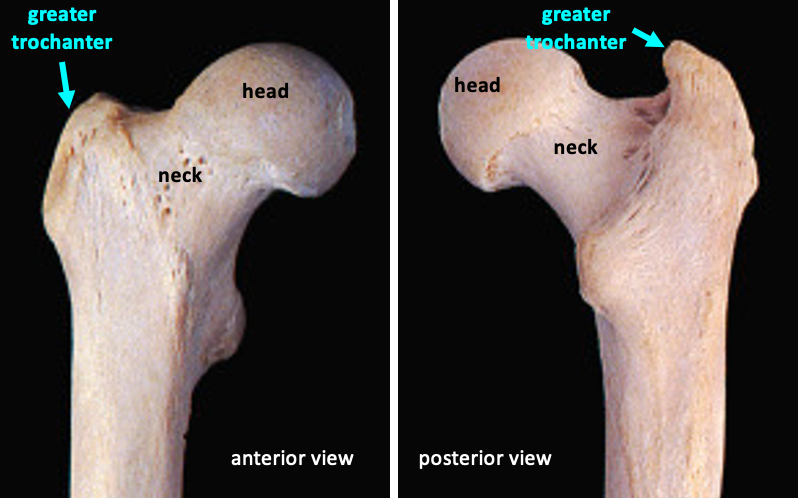
The distal end of the femur has a large smooth condylar surface where it articulates with the tibia and patella to form the knee joint.
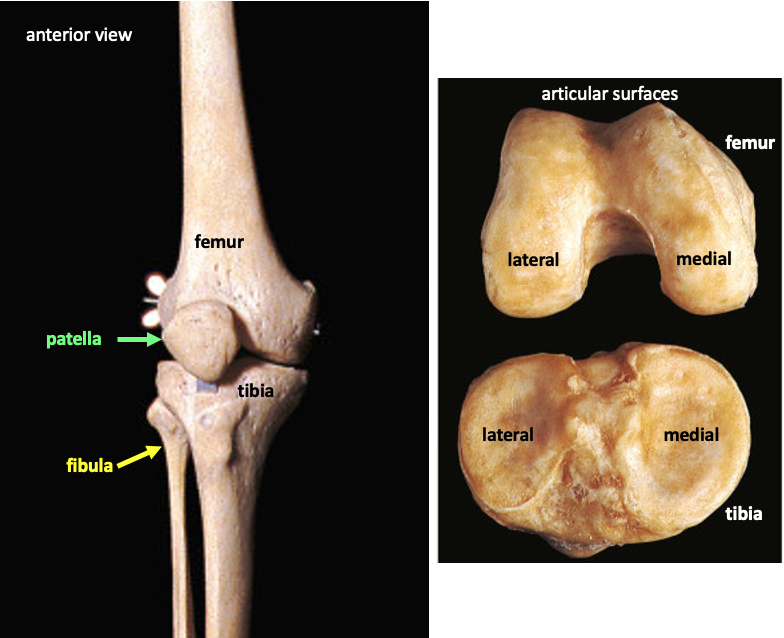
The condylar surface divides to form a medial condyle and a lateral condyle., which can be seen most easily in a posterior or inferior view of the bone.
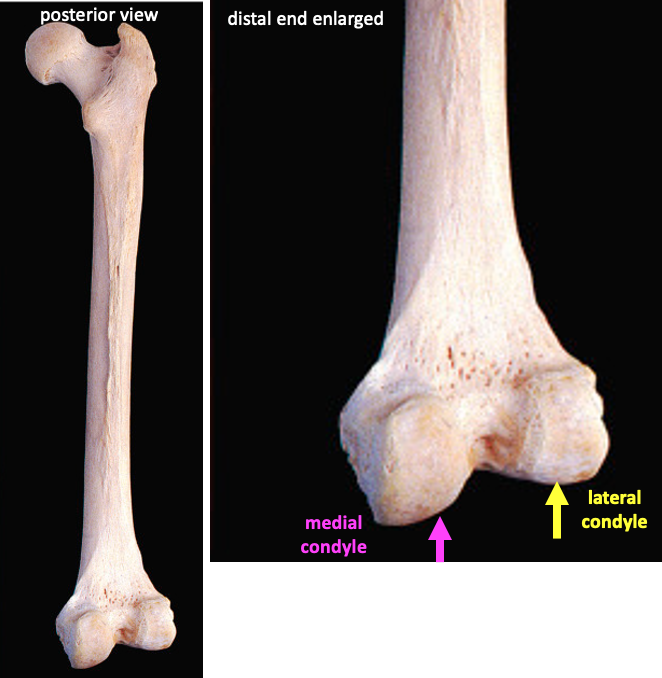
The medial and lateral condyles have a different appearance, but the way to confidently identify them is to look at the whole bone and note the medial side by located the head of the femur.
The patella (kneecap) is a sesamoid bone, meaning it is embedded in a tendon (the patellar tendon).
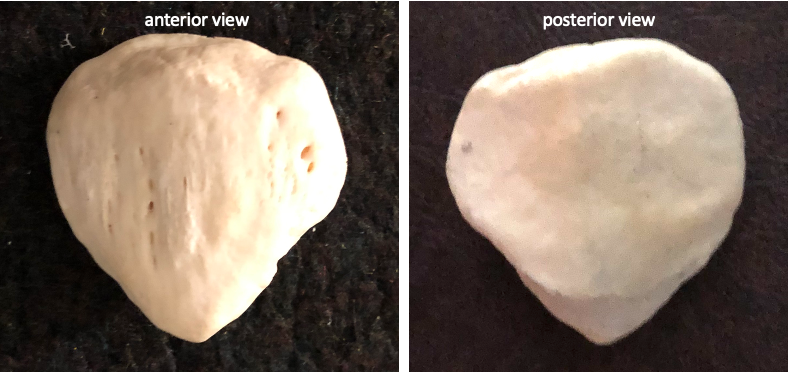
The tibia (shinbone) is the large bone in the lower leg that supports the weight of the body and forms a joint with the femur at the knee.

As with the femur, the condylar surface on the superior side of the tibia is divided into a medial condyle and a lateral condyle. The way to confidently discriminate between medial and lateral condyles is to look to the distal end of the bone and identify the medial malleolus. The medial malleolus forms the outer part of the ankle joint on the medial side. This is the hard prominence you can feel under your skin.
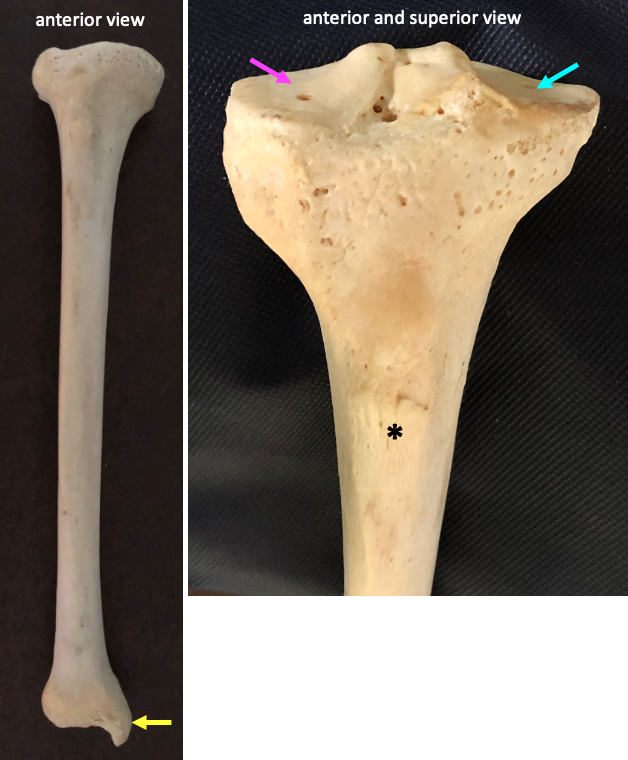
A distinguishing feature on the anterior surface of the tibia is the tibial tuberosity. This is a rough prominence near the proximal end of the bone that is the attachment point for the patellar tendon, which links to the quadriceps muscles (vastus lateralis, vastus medialis, rectus femoris, and vastus intermedius).
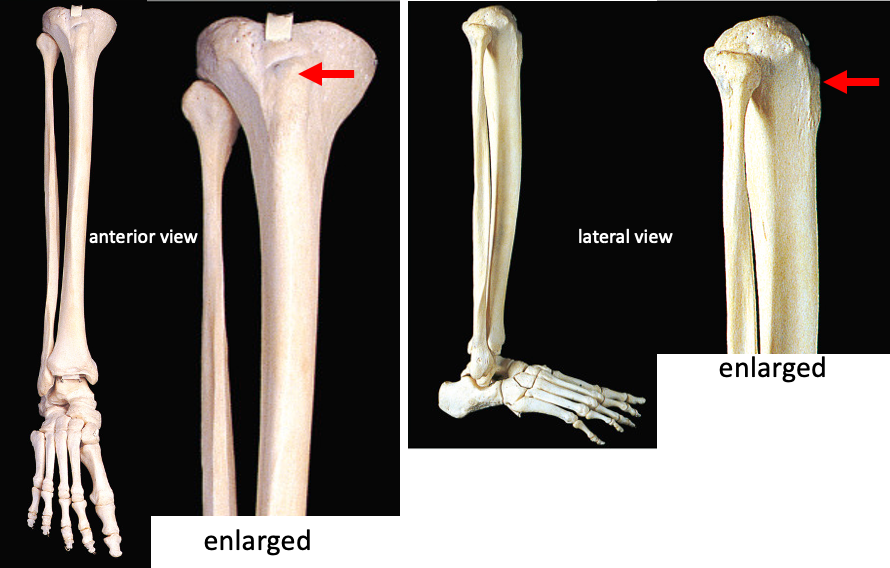
The fibula is the small lateral bone in the lower leg. At its distal end is the lateral malleolus, which forms the outer part of the ankle joint on the lateral side. Similar to the medial malleolus, it is easy to feel the lateral malleolus just under the skin at the ankle.

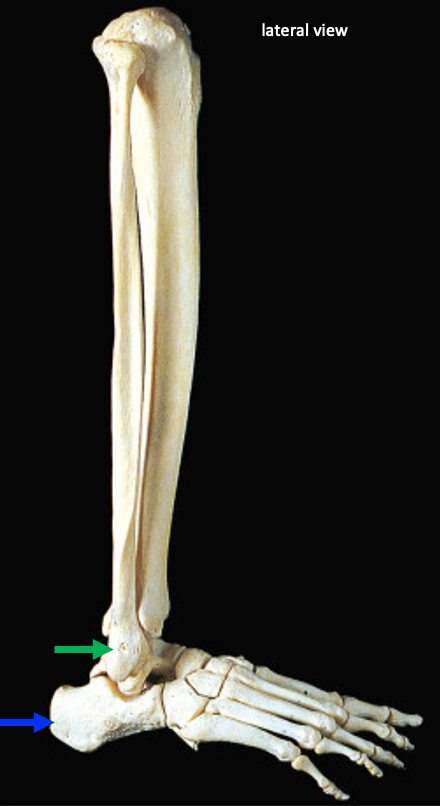
The calcaneus (heel bone) is the attachment for the Achilles tendon (the insertion for the gastrocnemius and soleus muscles). The calcaneus is one of the tarsal bones.
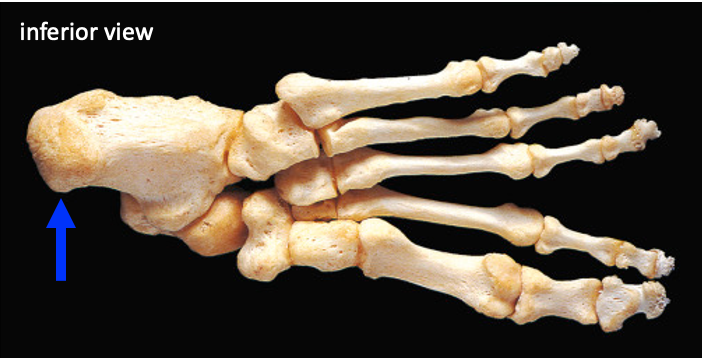
Optional Videos
Below are links to videos in the Acland’s Video Atlas of Anatomy. They are helpful in allowing you to get a sense of the bones in three dimensions. They also will introduce you to the movements around the joints, which we will be studying in our class about muscle anatomy. The first video listed below is the most useful since we are studying the anatomy of the knee joint.
2.2.1 Bony features of the knee joint
2.3.2 Bones and ligaments of the ankle joint
